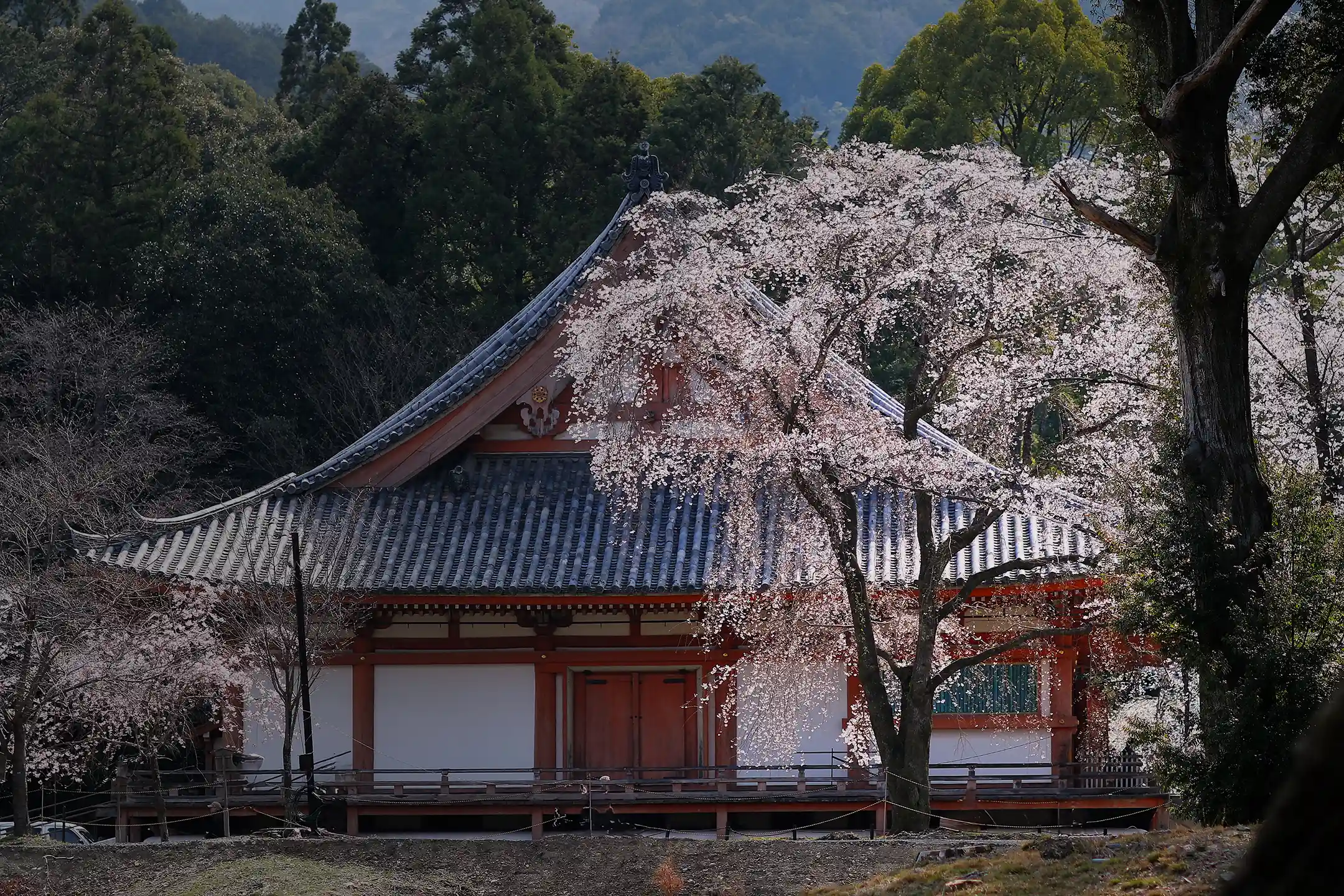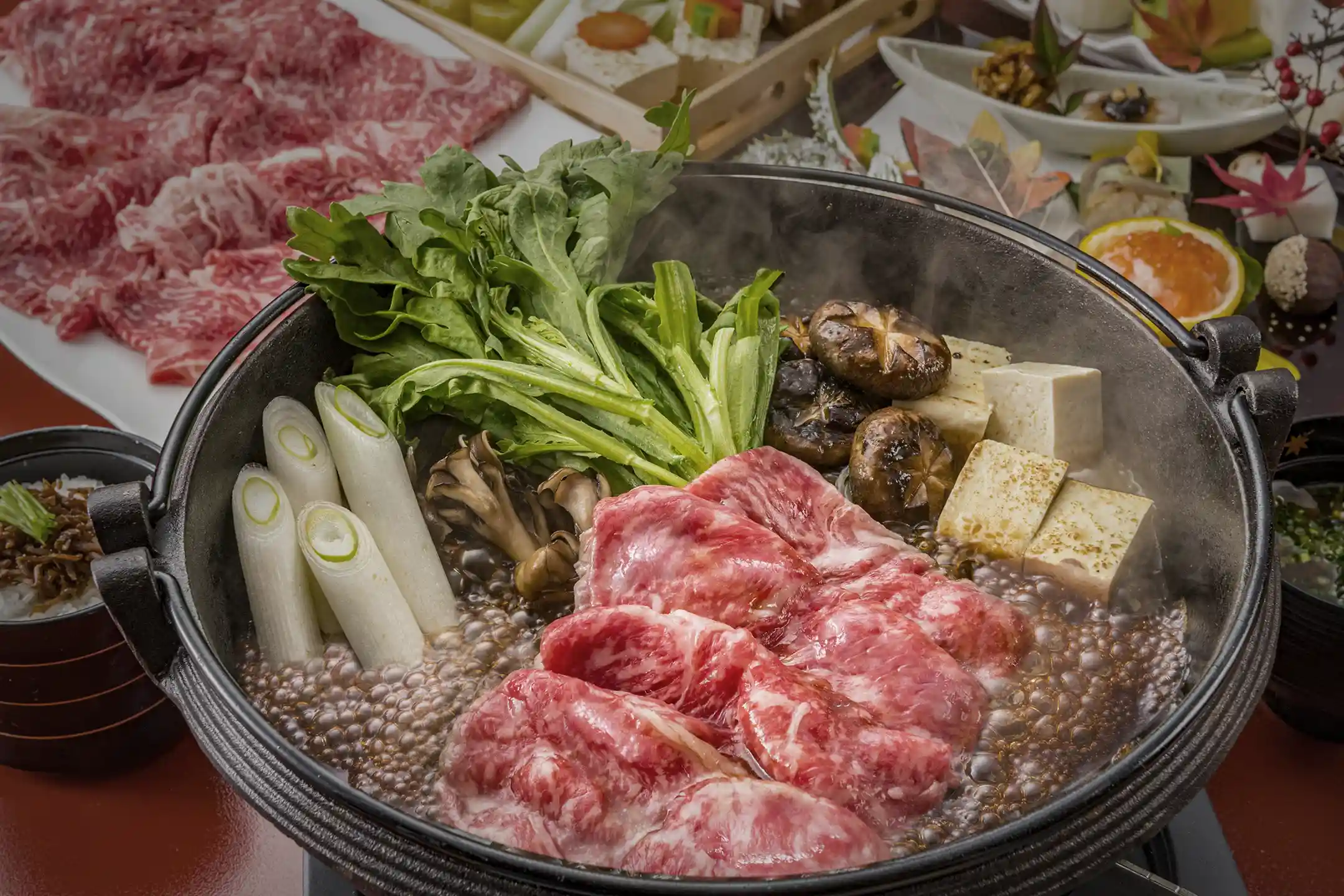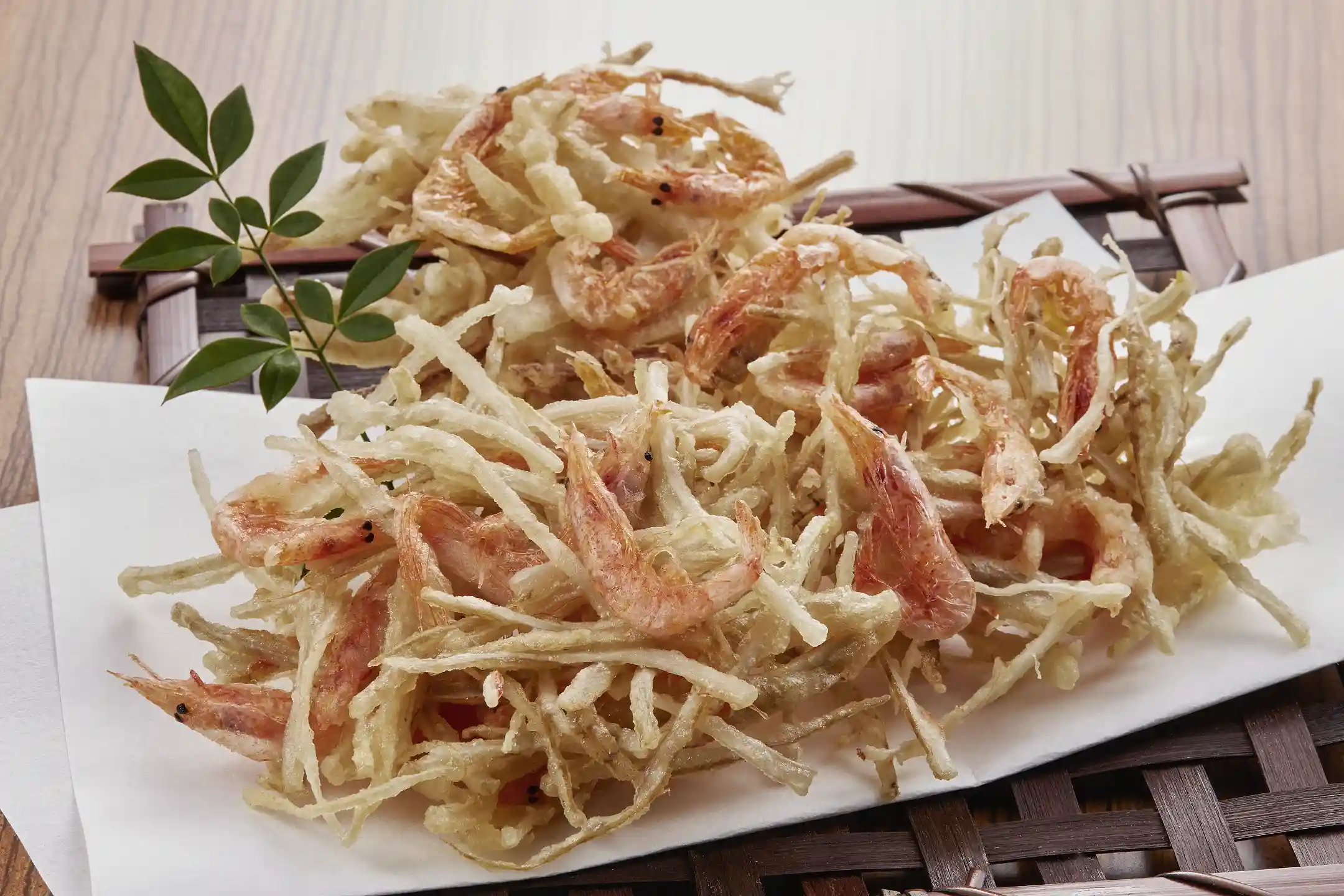Kyoto, once Japan’s capital for over a thousand years, enjoys a global reputation for its richly layered history and cultural heritage. It’s also the source of a distinct culinary tradition—kyō-ryōri—that has charmed visitors eager to taste “the real Kyoto.” Sometimes Western travelers view Japan through an “Orientalist” lens, lumping it into an “exotic East,” but the essence of Kyoto is much more deeply woven with religious beliefs and cultural nuances that can’t be reduced to mere foreign allure. Kyoto cuisine pairs a refined aesthetic with a commitment to reducing waste and a profound connection to Buddhism, highlighting seasonal changes in nature while avoiding unnecessary extravagance.
In this article, I’ll explore how court culture stretching back to the Heian period and the presence of temples helped to shape Kyoto’s culinary landscape. You’ll see how dishes like yudofu (tofu hot pot), shōjin ryōri (Buddhist vegetarian cuisine), and obanzai (traditional home-style cooking) all reflect an elegant sense of hospitality. We’ll also look at the modern emphasis on sustainability—from old-fashioned kaiseki in heritage restaurants to new collaborations with local artisans—so you can appreciate the sophisticated world of Kyoto food from every angle.
The Allure and Background of Kyoto Food Culture
When you think of Kyoto, you probably imagine a city once called home by emperors, brimming with art and architecture for centuries. Amid these surroundings, a culinary style evolved that marries delicate visuals with spiritual insight. The hallmarks of Kyoto cuisine—kyō-ryōri—are its devotion to “presentation, fragrance, taste, and seasonality.” Whether it’s the chosen dishware, color scheme, or precise plating, each element is thoughtfully orchestrated, almost as if you’re admiring an art piece.
At the same time, Kyoto’s culinary identity traces back to its mountainous geography, which meant limited farmland, plus centuries of Buddhist influence that advanced meat-free cooking. Over generations, this turned into a style that elevates umami from minimal ingredients, creating a flavor that even in modern times has drawn praise as a “Japanese approach to eco-consciousness.” Seeing this tradition as an ongoing dialogue between culture and environment can expand your notions of washoku beyond anything you might label “exotic.”
The Deep Connection Between Kyoto’s History Since the Heian Period and Its Cuisine
From the late 8th century into the 12th, during the Heian era, Kyoto thrived under a refined aristocratic society. Courtiers placed great stock in the aesthetics of seasonal feasts, shaping a “banquet culture” that still reverberates through modern Kyoto cuisine. Rather than the ostentatious display once prevalent in European medieval courts, Heian nobles celebrated subtlety—like color-coordinated seasonal plates and elegantly modest banquets. Visit a scenic kaiseki dinner along the Kamo River or at a temple, and you’ll still see traces of that old-world grace.
Importantly, these tables aren’t just a curiosity from Japan’s distant past—they speak to a living etiquette that quietly endures to this day. When you explore, you’re learning not just about “traditional Japan,” but about how a city’s daily life still resonates with ancient values. Instead of pigeonholing it as “exotic,” viewing Kyoto’s food culture with historical and cultural respect yields a more genuine appreciation.
Cherishing the Seasons in Kyoto’s Ingredient Selection
Cradled by mountains, Kyoto experiences hot, humid summers and cold winters, which shape the city’s well-known kyō-yasai (Kyoto vegetables). These specialty produce items, like Kamo eggplant and Kujo scallions, thrive in this basin climate, resulting in vibrant seasonal flavors. In summer, hamo (pike conger) is light but rich in umami, made even tastier through a refined boning method. In winter, Kujo green onions are sweet and a perfect fit for yudofu.
Underpinning it all is an ethos of “use what’s available locally and avoid waste”—a principle that resonates more than ever in today’s conversation about global food systems. Observing how resource-limited farmland blossomed into imaginative cooking can alter your perspective on “Japanese cuisine as pretty plating” by highlighting the ingenuity behind each dish.
Representative Kyoto Foods and How to Best Enjoy Them
Kyoto’s array of local dishes stems from its distinctive history, religious influences, and the region’s geography. Standouts like yudofu, shōjin ryōri, and obanzai showcase a refined flavor palate and the Buddhist-rooted perspective behind it. Approaching these dishes with “cultural relativism”—seeing them as both uniquely Japanese and universally appealing—can open your eyes to fresh insights. Below, I’ll give you an overview of these specialties—ranging from traditional styles to modern reinterpretations.
1. Yudofu
Historical and Cultural Background
Yudofu (tofu hot pot) evolved from Zen Buddhist vegetarian practices. While tofu had been introduced to Japan by the Nara era (8th century), it was during the Kamakura era’s Zen movement (around the late 12th to 14th centuries) that it became a prized protein. In the Nanzen-ji area, yudofu emerged from temple cuisine and remains strongly associated with this district, where one mainstay—“Okutan,” founded in 1635—still thrives, proving that Kyoto’s food tradition is both ancient and adaptable.
Current Ways to Enjoy and Key Characteristics
Near temples like Nanzen-ji, you’ll likely eat yudofu in a serene garden setting. Smooth Kyoto tofu simmers in a simple kombu broth, allowing you to savor its natural sweetness. Various garnishes and a rich soy-based sauce enhance the taste. The dish is also vegan-friendly, which resonates with many Western visitors who follow meat-free diets. This openness to a wider audience highlights Kyoto’s time-honored principle of hospitality, always evolving to meet new dietary pSources.
Recommended Yudofu Restaurants
In the vicinity of Nanzen-ji, you’ll find both venerable restaurants and modern-style kappō (fine dining) spots offering yudofu. With English menus more common now, you can relish the scenery, the history, and the flavors all together. Some establishments spin contemporary variations with yuba (tofu skin) or soymilk broths, ensuring the tradition remains fresh while staying true to its roots.
2. Shojin Ryori
Historical and Cultural Background
Shōjin ryōri is a style of vegetarian cuisine deeply rooted in Buddhist principles and likely introduced by the Zen monk Dogen in the 13th century. It forbids meat and fish out of reverence for all life, mirroring the compassion that underscores Buddhist beliefs. Today, with more global interest in plant-based eating, shōjin ryōri finds a kinship among those looking to reduce or eliminate animal products from their diet.
Current Ways to Enjoy and Key Characteristics
You can sample shōjin ryōri in temple complexes or at long-established restaurants offering a contemplative setting—an ideal way to unite dining with Kyoto’s spiritual heritage. The plant-based fare typically follows a “five methods, five tastes, five colors” scheme, blending tofu, yuba, and seasonal vegetables into visually appealing courses. If you’re curious about meditation or mindfulness, it’s a chance to align your meal with the quiet of a Zen temple.
Popular Shojin Ryori Restaurants
Respected venues near temple gates, such as “Ajikiro (Ajiro)” or “Kangaan,” deliver time-tested cooking techniques with a modern touch. During a shōjin ryōri meal, you’re invited to reflect on life’s interconnectedness—precisely why it resonates with diverse travelers who yearn for deeper meaning in their culinary experiences.
3. Obanzai
History and Characteristics as Home Cooking
Obanzai refers to the daily dishes traditionally made in Kyoto households. With farmland in short supply, city dwellers came up with creative ways to use dried foods, beans, and leftover scraps, thus ensuring little went to waste (5). Today’s conversations on sustainable cuisine, including reducing waste, echo these age-old habits, showing how Kyoto’s thrifty approach has a modern relevance.
Present-Day Enjoyment and Seasonal Examples
Typically served in small bowls, obanzai might be described as “Japanese tapas,” inviting you to savor a variety of simmered or pickled treats that follow the seasonal calendar. Largely vegetable-focused, it’s often seen as a healthy, accessible style for those used to lighter eating in Western countries. Think spring bamboo shoots, summer eggplant or myoga, autumn mushrooms, or winter Kujo scallions—there’s always something fresh to discover.
Popular Restaurants Showcasing the Essence of Kyoto
Originally a household staple, obanzai has grown attractive to visitors, especially as more restaurants convert old machiya homes into cozy dining spots. At places like Mukadeya or Kyoto Mamehachi, you’ll absorb centuries of local traditions right along with each bite, connecting to the honest simplicity and skillful flavor extraction that define Kyoto.
Key Points for Deepening Your High-Quality Kyoto Food Experience
Experiencing Authentic Kyoto Cuisine at Long-Established Ryotei and Inns
Many of Kyoto’s most prestigious ryotei (traditional restaurants) and ryokan (inns) have centuries-long histories, offering kaiseki (haute Japanese) menus in an atmosphere resonating with bygone imperial courts and warrior traditions. It’s often said that the “prototype of Japanese cuisine” grew from this confluence of aristocratic and samurai influences. To Western eyes, these settings might appear as formal “high-end establishments with unique protocols,” but dining there can also help sustain local culture itself.
Note that advanced reservations and dress codes—sometimes involving a jacket or business casual attire—are typical. While some norms overlap with Western fine dining, others—like removing shoes or sitting on tatami—are more Japanese. Still, staff are generally accommodating to newbies, reflecting a blend of sophistication and cultural hospitality.
Engaging with Local Artisans and Chefs
Kyoto offers a growing range of classes and workshops where you can meet experienced craftspeople and chefs. Whether learning to prepare sushi, soba, or wagashi (sweets), rolling up your sleeves can break language barriers and deepen mutual understanding. It transforms a simple introduction to “traditional Japanese food” into a genuine exchange about daily life here.
For example, making nerikiri sweets with a wagashi artisan can reveal just how much training underlies the seemingly whimsical shapes of seasonal flowers and animals. You’ll see an interesting contrast between “cute final products” and “rigorous technique,” illuminating the layers of skill behind each sweet.
Sustainability and the Adoption of New Technologies
Many Kyoto restaurants have renewed their focus on sustainable methods, revisiting timeless ideas like using seasonal, local ingredients to minimize waste. Yet they’re also embracing new global frameworks, like Michelin’s Green Star system. Kyoto establishments recognized with Green Stars meld heritage cooking with fresh concepts to ensure an eco-friendlier experience.
What’s more, advanced technology has found its way into everything from booking apps to fusion cuisine that pairs molecular gastronomy with classical dashi. Observing this interplay between future innovations and venerable techniques is a reminder that Japanese culture is never static—it’s continuously open to global dialogues and tools, as you’ll see in Kyoto’s inclusive and inventive culinary scene.
Conclusion
Ultimately, Kyoto’s culinary tradition—kyō-ryōri—embodies a subtle refinement forged over a thousand-plus years, one that deftly balances visual elegance, seasonal abundance, and a reverence for life rooted in Buddhism. Spanning the Heian court to the teachings of temple life, and from humble farmland constraints to state-of-the-art technology, all these threads coalesce into an aesthetic that’s as beautiful to behold as it is satisfying to taste.
Today, Kyoto remains vibrant, welcoming global visitors with an evolving cuisine that respects the past while forging new paths. Whether it’s centuries-old dishes like yudofu, shōjin ryōri, or obanzai, or more contemporary spins, you’re not just tasting a meal—you’re exploring a mosaic of history, design, and social harmony.
Maybe the biggest takeaway is that “Japanese food isn’t just about sampling exotic specialties.” It’s a gateway to deeper empathy built on heritage and openness to different perspectives. So next time you sit down for a Kyoto-style feast, pause to notice how the colors, plating, and gentle umami embody a quiet kindness. Embrace the experience and step away less as a casual tourist, and more as a curious participant in Kyoto’s living story.
Author Bio






/Kazunoko%20Matsumae-zuke%20(Herring%20Roe%20and%20Seafood%20Pickles).webp)